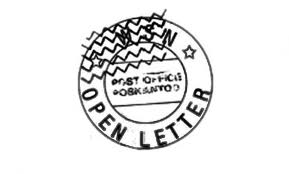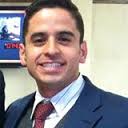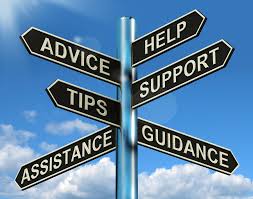Grasping
By John Greco
Originally published on August 27, 2012
Re-posted with permission from johnponders blog
 “Ah, but a man’s reach should exceed his grasp, else what’s a heaven for?”
“Ah, but a man’s reach should exceed his grasp, else what’s a heaven for?”
— Robert Browning
I ran across this quote many, many years ago. It was a curious quote to me back then; I wasn’t sure what to make of it. I couldn’t quite grasp the meaning.
But, over the years, I’ve made sense of it. I’ve got it now. In fact, since I’ve gotten it, I’ve flipped it into something more meaningful, for me, in my work.
I was recently sitting in on an executive session kicking off the strategic planning cycle. I used the quote as I was making a point in the meeting. I am not at all sure I should have used it, because when I used it I used my flipped meaning and not the standard, widespread meaning.
(I also doubt that I should have used it because, well, strategic planning meetings aren’t exactly forums for poetry readings… but, alas, I’m always seeking to be impactful when making my points…)
Back to the quote, and the strategic planning meeting.
By most accounts, Robert Browning was talking about the notion of aspirations. Reach for the stars! He was advocating for setting challenging goals.
He goes on to note — with an astonishing economy of words — that we should not expect to achieve those lofty goals; but never fear, there’s always the afterlife…
So conversationally it might be no, go for it, just don’t expect to get everything you go for! Heaven is where we get everything we want… If we accomplish everything we set out to accomplish, what is heaven for then?
 Now you might be thinking how in the world that notion would be relevant to share in a business strategic planning meeting. I don’t blame you, I would be thinking that too, if I intended to use that meaning.
Now you might be thinking how in the world that notion would be relevant to share in a business strategic planning meeting. I don’t blame you, I would be thinking that too, if I intended to use that meaning.
But of course my application wasn’t drawing on that meaning.
For me, the crux of the matter is to focus — and work hard — on minimizing the difference between our reach and our grasp.
Now I’m not suggesting we necessarily not reach for the stars. This to me isn’t an automatic we need to manage our expectations play, although that’s where it could land. No; for me, it is way more about increasing our capabilities, i.e. improving our grasp. In more business / OD-speak, it is about tweaking and syncing up the structure, policies, work processes, culture, talent… the plane will fly based on how it’s designed; shouldn’t we redesign when we want it to fly differently?
<sigh>
I really don’t lose my patience that often. Really, I don’t. But there are times that test me, and one of those times is when I repeatedly see goals that are set with only perfunctory attention given to investing in building the organizational capability to reach them.
This is a particularly acute hot button because I really can’t stand the predominant result of this — leaders pointing fingers and placing blame at people, and not owning the root cause of the underperformance — insufficient organizational design.
And there’s an insidious reinforcing loop that’s often in play — when we set aggressive targets, but begin falling short because we haven’t redesigned to enable the performance, leaders will react, make short-term decisions to reach the short-term targets (to get those year-end bonuses) but which weaken the organization’s capability and leaders’ decision-making ability to break the cycle and accomplish the longer-term strategic vision…
So there’s this annual business strategy cycle that is my version of Bill Murray’s groundhog day; please, please let me wake up to a new day and a strategic planning process that is different than the last several…
Please don’t misunderstand; the strategic vision should be a stretch, it should challenge the organization to accomplish bigger and better in order to stay strong and competitive. Because it is the result of strategic thinking, a strategic vision can inspire, and energize. It can motivate to reach.
But strategic visions need to incorporate comprehensive strategic plans that emphasize building the requisite organizational capability.
These plans raise confidence that the strategic vision is realizable. These plans strengthen our grasp.
What do you think?
But wait, one last thing. Let’s look one more time at that quote.
Ah, but a man’s reach should exceed his grasp, else what’s a heaven for?
What could that “Ah” mean?
I imagine Browning is saying but consider this or look at it this way …
Ah, indeed. That’s all I’m asking too…


 My online friend, Marc Pitman is hosting this month’s Nonprofit Blog Carnival and asks his fellow non-profit bloggers to write an open letter to executive directors in honor of President’s Day. For those of you who don’t know of Marc, he is well-known to friends and business associates as “The Fundraising Coach“. As the coach describes in his
My online friend, Marc Pitman is hosting this month’s Nonprofit Blog Carnival and asks his fellow non-profit bloggers to write an open letter to executive directors in honor of President’s Day. For those of you who don’t know of Marc, he is well-known to friends and business associates as “The Fundraising Coach“. As the coach describes in his  If you cry “Forward!” you must make clear the direction in which to go. Don’t you see that if you fail to do that and simply call out the word to a monk and a revolutionary, they will go in precisely the opposite directions.
If you cry “Forward!” you must make clear the direction in which to go. Don’t you see that if you fail to do that and simply call out the word to a monk and a revolutionary, they will go in precisely the opposite directions.
 As someone with two degrees in planning, I catch myself all the time with my non-profit clients explaining that the solution to their problems is that they need a plan. It might be a strategic plan, resource development plan, or board development plan . . . but oftentimes I am amazed at how many times failing non-profit agencies just haven’t invested in creating plans. I mean, come on folks! Who hasn’t heard the old expression, “If you fail to plan, then you plan to fail“?
As someone with two degrees in planning, I catch myself all the time with my non-profit clients explaining that the solution to their problems is that they need a plan. It might be a strategic plan, resource development plan, or board development plan . . . but oftentimes I am amazed at how many times failing non-profit agencies just haven’t invested in creating plans. I mean, come on folks! Who hasn’t heard the old expression, “If you fail to plan, then you plan to fail“?
 In my humble opinion, non-profit professionals have two choices:
In my humble opinion, non-profit professionals have two choices: As I’m sure you aware by now, I like to reflect back on things that have occurred and create a plan to avoid their reoccurrence. As such, I’ve been thinking about things our field can do to be stronger.
As I’m sure you aware by now, I like to reflect back on things that have occurred and create a plan to avoid their reoccurrence. As such, I’ve been thinking about things our field can do to be stronger.
 It happened again yesterday. A non-profit friend of mine called and we talked for an hour about their revenue model and fundraising issues. Questions included:
It happened again yesterday. A non-profit friend of mine called and we talked for an hour about their revenue model and fundraising issues. Questions included: If I’ve heard it once, I’ve heard it hundreds of times . . . non-profit board volunteers and staff hate strategic planning. Why? The reasons are all over the place, but some of the more popular reasons given are:
If I’ve heard it once, I’ve heard it hundreds of times . . . non-profit board volunteers and staff hate strategic planning. Why? The reasons are all over the place, but some of the more popular reasons given are: Sometimes I think the universe speaks to us, and lately it has been begging me to write this blog. Over the last few months, I’ve spoken with a good handful of non-profit professionals who have shared stories of scandal and crisis that would make your toes curl. These stories have ranged from incidents on the front line that made the local newspaper to outright embezzlement.
Sometimes I think the universe speaks to us, and lately it has been begging me to write this blog. Over the last few months, I’ve spoken with a good handful of non-profit professionals who have shared stories of scandal and crisis that would make your toes curl. These stories have ranged from incidents on the front line that made the local newspaper to outright embezzlement. For the record, I agree with my United Way friends. If you don’t know about
For the record, I agree with my United Way friends. If you don’t know about  You can probably spend the rest of your life writing policies, but let’s not get carried away. Here are a few questions I suggest you ask as you start going down this road:
You can probably spend the rest of your life writing policies, but let’s not get carried away. Here are a few questions I suggest you ask as you start going down this road: It happens every year. My partner and I get a phone call from Cindy, who is Ernie Gamino’s assistant, and she asks us to please schedule a year-end sit down meeting. Ernie is our Edward Jones financial advisor, and getting time in both of our calendars is a challenge. However, we found some time this past Saturday. I’m glad we did because I discovered that Ernie is a really good fundraising professional, who has never been trained as one or worked at a non-profit organization. We can all learn a lot from Ernie and his colleagues.
It happens every year. My partner and I get a phone call from Cindy, who is Ernie Gamino’s assistant, and she asks us to please schedule a year-end sit down meeting. Ernie is our Edward Jones financial advisor, and getting time in both of our calendars is a challenge. However, we found some time this past Saturday. I’m glad we did because I discovered that Ernie is a really good fundraising professional, who has never been trained as one or worked at a non-profit organization. We can all learn a lot from Ernie and his colleagues. I started the meeting off by growling at poor Ernie. I wanted to know why this annual meeting is necessary? Can’t he just go about doing his job and call me when he needs to get permission to do something with my investment portfolio.
I started the meeting off by growling at poor Ernie. I wanted to know why this annual meeting is necessary? Can’t he just go about doing his job and call me when he needs to get permission to do something with my investment portfolio. We talked about his Northern Illinois University (NIU) football team and the state of the BCS football system.
We talked about his Northern Illinois University (NIU) football team and the state of the BCS football system.